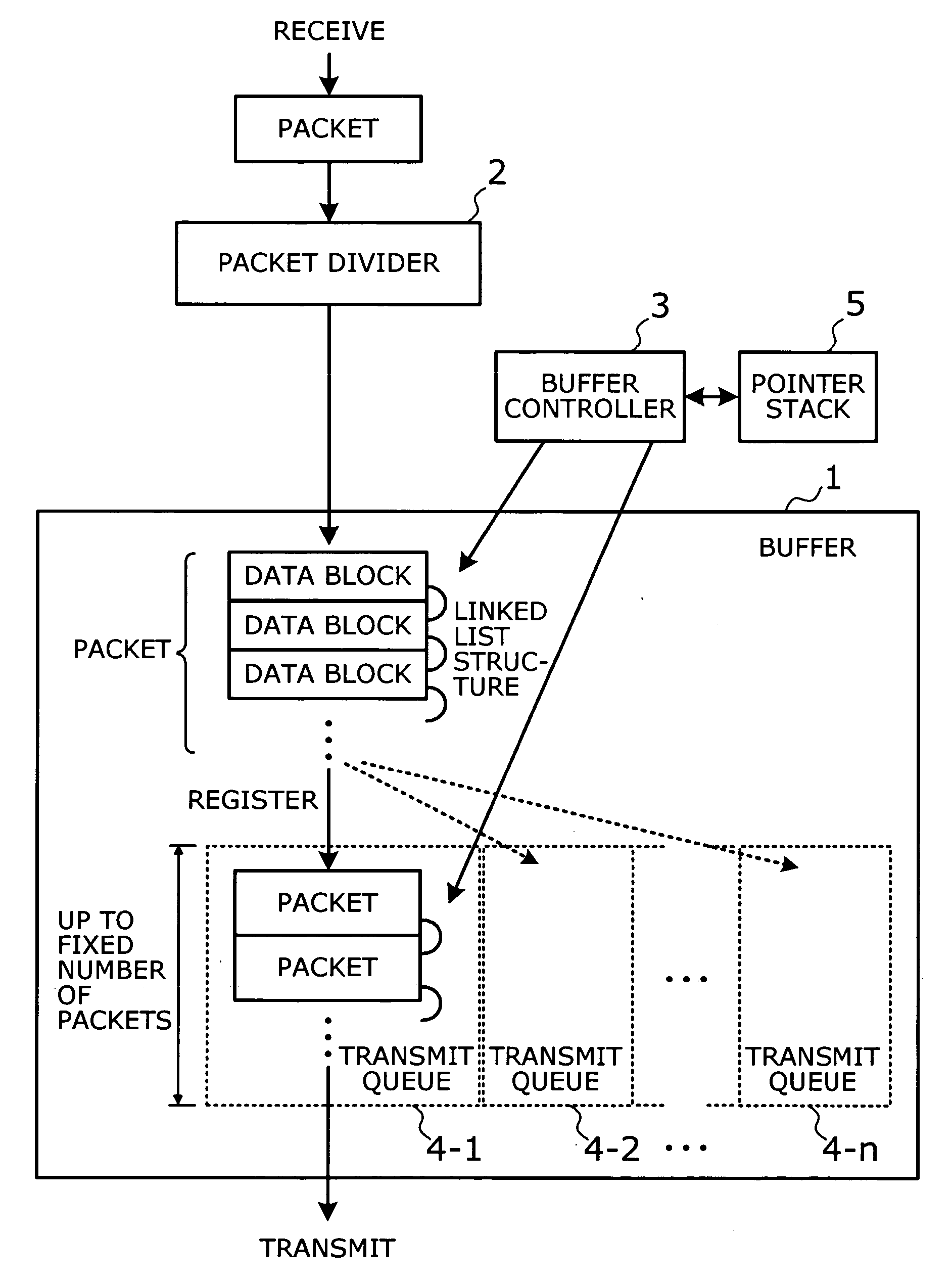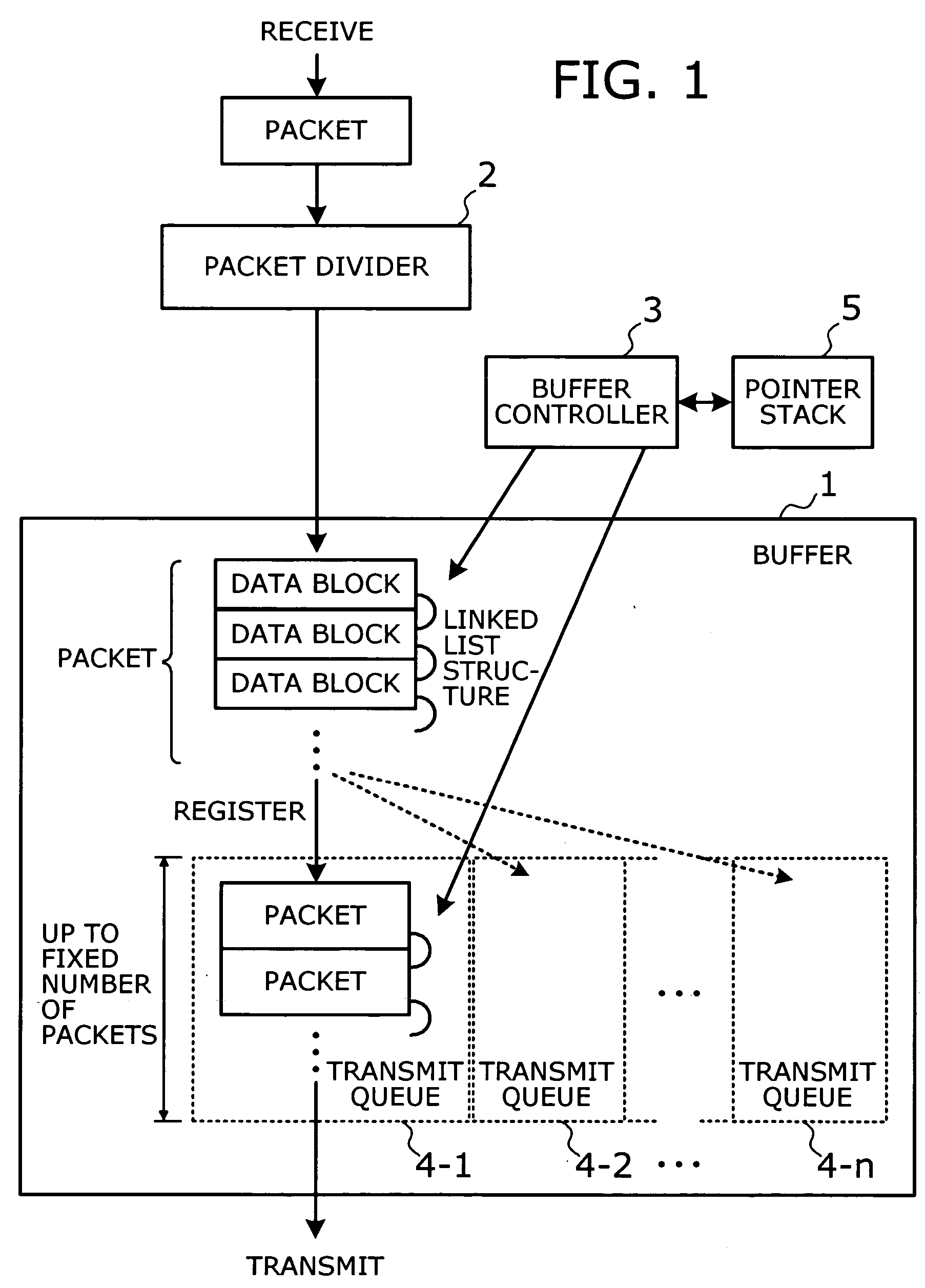Network switching device and method using shared buffer
a network switching and buffer technology, applied in data switching networks, digital transmission, instruments, etc., can solve the problems of large memory space consumed by buffers, reduced memory efficiency, and large memory capacity of devices, and achieve the effect of high memory use efficiency in buffering variable-length packets
- Summary
- Abstract
- Description
- Claims
- Application Information
AI Technical Summary
Benefits of technology
Problems solved by technology
Method used
Image
Examples
Embodiment Construction
[0039] Preferred embodiments of the present invention will be described below with reference to the accompanying drawings, wherein like reference numerals refer to like elements throughout.
[0040]FIG. 1 is a conceptual view that shows the principle of the present invention. The network switching device of the present invention is connected to a plurality of networks where messages are communicated in the form of variable-length packets, so that the device transports packets between those networks. As shown in FIG. 1, this network switching device has a buffer 1, a packet divider 2, and a buffer controller 3.
[0041] The buffer 1 is a storage device (e.g., semiconductor memory) for storing received packets. The packet divider 2 divides each received packet into one or more fixed-length data blocks and supplies them to the buffer 1. This means that one data block is smaller than the maximum data size that a single packet allows. The buffer controller 3 controls read and write operation...
PUM
 Login to View More
Login to View More Abstract
Description
Claims
Application Information
 Login to View More
Login to View More - R&D
- Intellectual Property
- Life Sciences
- Materials
- Tech Scout
- Unparalleled Data Quality
- Higher Quality Content
- 60% Fewer Hallucinations
Browse by: Latest US Patents, China's latest patents, Technical Efficacy Thesaurus, Application Domain, Technology Topic, Popular Technical Reports.
© 2025 PatSnap. All rights reserved.Legal|Privacy policy|Modern Slavery Act Transparency Statement|Sitemap|About US| Contact US: help@patsnap.com



